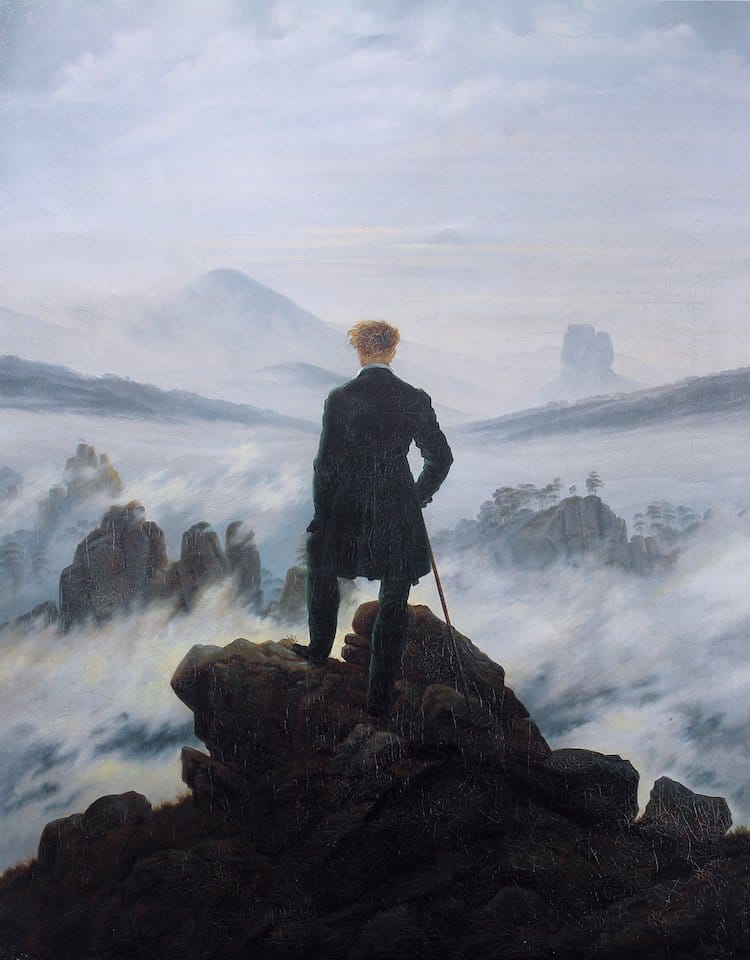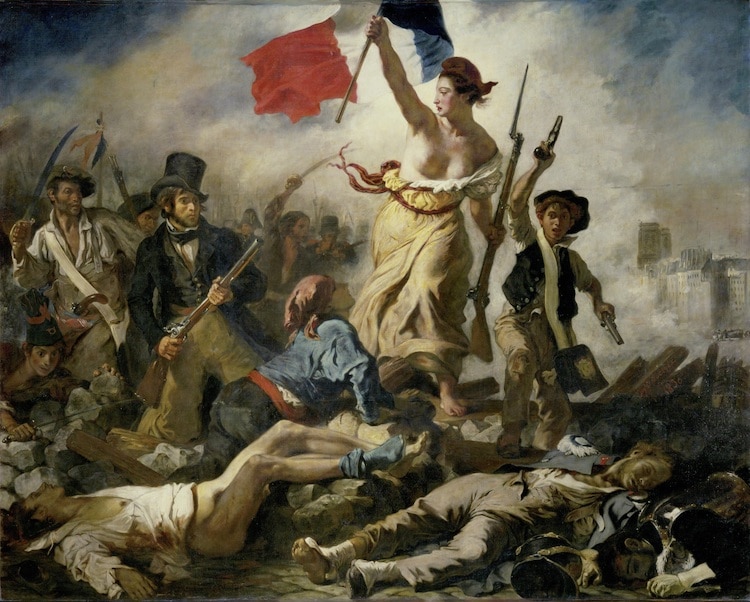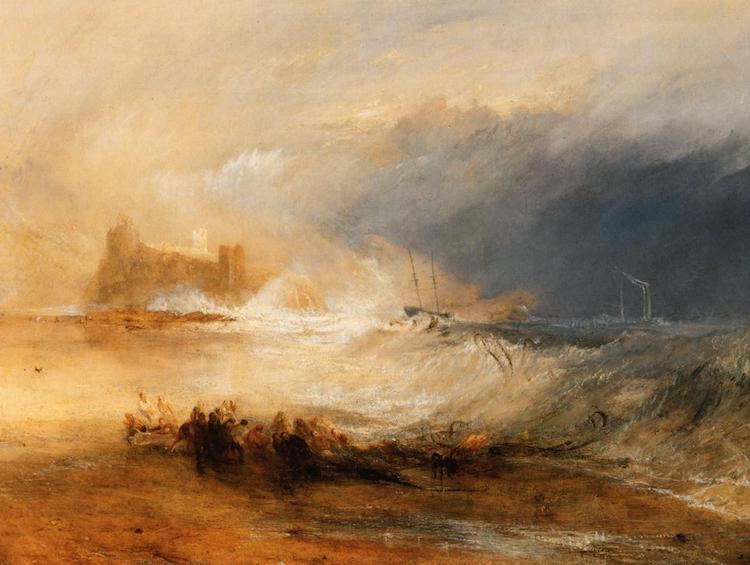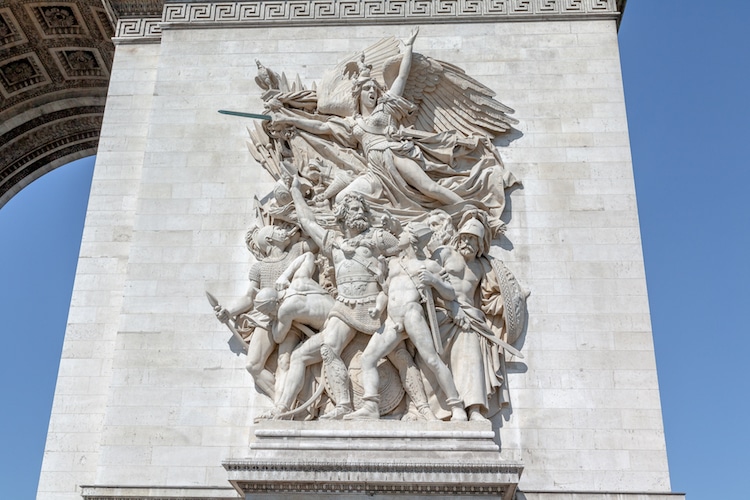
Caspar David Friedrich, ‘Wanderer Above the Sea of Fog,' ca. 1818 (Photo: Wikimedia Commons, Public Domain)
Throughout art history, many major art movements emerged in response to existing artistic approaches. Pre-Raphaelite painting, for example, was born out of a dislike of the Renaissance, while Rococo artists built upon the opulence of Baroque art. Though this phenomenon has manifested time and time again, it reached a peak with the onset of Romanticism, an early 19th-century movement that rejected the formality of Neoclassicism and, instead, embraced emotion.
Today, the Romantic genre is mostly associated with large-scale paintings. However, the movement influenced several disciplines and branches of study, culminating in a legacy evident in the visual arts and beyond.
What was the Romantic Period?

Eugène Delacroix, “Liberty Leading the People,” 1830 (Photo: Wikimedia Commons, Public Domain)
Romanticism was a cultural movement that emerged around 1780. Until its onset, Neoclassicism dominated 18th-century European art, typified by a focus on classical subject matter, an interest in aesthetic austerity, and ideas in line with the Enlightenment, an intellectual, philosophical, and literary movement that placed emphasis on the individual.
While Romantic figures agreed with the Enlightenment's interest in individualism, they steered away from its rationalism. Their approach diverged greatly from the Neoclassicists, who were known for their didactic history painting. Instead of looking back to classical models, artists like Joseph Mallord William Turner, Eugène Delacroix, Théodore Géricault, Francisco Goya, and Caspar David Friedrich found inspiration in their own imaginations. This introspective approach lent itself to an art form that predominantly explored the spiritual side of humanity, the sublimity of nature, and, above all else, the fruits of personal freedom.
“If by ‘romanticism' one means the free manifestation of my personal impulses, distancing myself from the rules set in schools, and my distaste for the recipes of the academy,” Delacroix famously remarked, “I must confess that not only am I a romantic, I was from the age of 15.”
Romantic Paintings

“Wreckers, Coast of Northumberland,” c. 1834 (Photo: Wikimedia Commons, Public Domain)
In general, Romantic artists worked in one medium: paint. Specifically, in the movement's early years, these figures predominantly focused on landscape painting. The Romantic landscape genre was primarily pioneered by JMW Turner, a British oil painter, watercolorist, and printmaker. Early in his career, Turner was associated with the Neoclassical movement, but a trip to the Swiss countryside sparked an artistic interest in nature, which materialized as an imaginative and untraditional approach to painting.
“A master of history, landscape and marine painting, he challenged the style of the old masters, trailblazing in technique and subject matter,” the Tate Britain explains. “Turner often shocked his contemporaries with his loose brushwork and vibrant color palette while portraying the development of the modern world unlike any other artist at the time.”
Turner's emotion-driven style paved the way for other artists, including John Constable and Caspar David Friedrich, whose powerful paintings explore the relationship between human beings and their sublime surroundings. However, Turner's work also inspired Romantics who didn't specialize in landscapes, like French artists Eugène Delacroix and Theodore Gericault. Like Turner, these figures employed expressive brushwork to heighten the drama of their action-packed paintings, including Liberty Leading the People and The Raft of the Medusa, respectively.
By focusing on emotion and the free expression of the artist, the Romantic Era allowed these painters to break free from the classical rules of art. The idea that an artist was a genius who could produce art “from nothing” using just their own creative thinking was of paramount importance to Romanticism. This concept was best summed up by poet and critic Charles Baudelaire, who wrote in 1846, “Romanticism is precisely situated neither in choice of subject nor in exact truth, but in a way of feeling.”
Other Disciplines

Photo: Stock Photos from Martin Sun/Shutterstock
While most Romantics stuck to painting, some dabbled in sculpture. Among the most well-known of these artists is François Rude, a French sculptor who crafted Le Marseillaise, a group of reliefs on Paris' Arc de Triomphe. However, aside from painting, Romanticism found most of its success beyond the visual arts.
Some of the 18th and 19th century's most well-known composers worked in the Romantic style. These include Ludwig van Beethoven, who also worked in the preceding Classical period, as well as Pyotr Ilyich Tchaikovsky, Franz Liszt, and Richard Wagner. Similarly, Romantic interests flourished in the field of literature, particularly in poetry. English poets like William Blake, William Wordsworth, and Samuel Taylor Coleridge led the way with their sensitive written works.
The Romantic movement also touched more academic disciplines, including education and both the social and natural sciences. In any case, Romanticism challenged leading intellectual ideas of the time, culminating in a period unlike any other. “There was something pioneering—almost revolutionary— about Romanticism,” the National Trust says. “It involved breaking with the past, and consciously moving away from the ideas and traditions of the Enlightenment. In so doing, Romanticism fundamentally changed the prevailing attitudes toward nature, emotion, reason, and even the individual.”
The Legacy of Romanticism
In the middle of the 19th century, the cycle of art history continued, and artists began reacting against the ideas associated with Romanticism. This shift in interests culminated in the emergence of Realism, a French movement that introduced the idea of average, working-class people, contemporary settings, and day-to-day scenes as worthy artistic subjects.
Though, at its height, the Romantic period lasted no more than 50 years, the movement remains a prominent piece of art history. Today, Romantic paintings by Delacroix and Géricault are among the Louvre's most treasured masterpieces; Goya is widely considered to be the last Old Master and the first of the moderns, making him one of Spain's most important artists; and, perhaps most importantly, the Romantics' love of nature helped inspire contemporary environmentalism. After all, as Friedrich wrote in 1803, “The whole of nature breathes, peace, joy, innocence and life.”
Frequently Asked Questions
What is Romanticism?
Romanticism was an artistic and cultural movement that emerged in the late 18th century.
What were the major themes of Romanticism?
Major themes of Romanticism included a love of nature, a focus on emotions and the individual, an interest in the supernatural and the mysterious, an appreciation of the past and of the exotic, and a celebration of the imagination.
Who were the major artists of Romanticism?
Eugène Delacroix, Théodore Géricault, Francisco Goya, William Blake, and Gustav Courbet are some of the most popular Romanticism artists.
This article has been edited and updated.
Related Articles:
How the Groundbreaking Realism Movement Revolutionized Art History
How Naturalism Art Moved Beyond Idealism To Capture Life’s True Details
Symbolism: A Meaningful Approach to Turn-Of-The-Century Poetry and Painting
Art Nouveau: The Ornate Architectural Style That Defined the Early 20th Century























































































